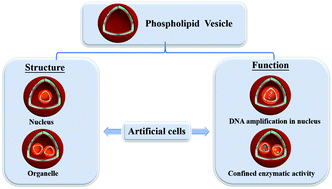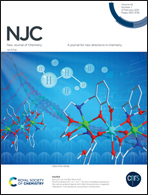The fabrication of phospholipid vesicle-based artificial cells and their functions
Abstract
Artificial cells have attracted increasing attention as cell models. The use of artificial cells can mimic cellular properties and behaviors to understand the working mechanisms of a cell. Since phospholipids are the main components of the biomembrane, phospholipids vesicles are widely employed to mimic the metabolic function of cellular structures. Herein, we describe recent developments in the construction of phospholipid vesicles as artificial cells, together with the applications of these vesicles. This review aims to provide a comprehensive summary of latest developments in the construction and application of phospholipid vesicle-based artificial cells, and highlight current problems, challenges and opportunities in this field.

- This article is part of the themed collection: 2021 Focus and Perspective articles


 Please wait while we load your content...
Please wait while we load your content...